ARCHITECTURAL PROJECTS
RESIDENTIAL
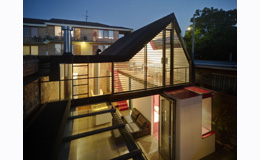
31 January, 2010
Vader House
A common terrace house in Melbourne has been altered to a modern and attractive space by Andrew Maynard Architects. 
His architecture became quickly recognized as an important upcoming force on the architectural scene. On 2002 he established Andrew Maynard Architects studio. He is internationally recognized for his rich built work, experimental designs, the awards that he has received and the exhibitions that he has presented.
His ideas were considered capable to "create unexpected pleasure in a highly problematic space". (Peter Hyatt) and his architecture was characterized as a "leap into the big time." (Pol Oxygen) Specifically Pol Oxygen commented: "Melbourne architect Andrew Maynard's goal is nothing short of "complete tyrannical world domination". He might be joking, but this young powerhouse of talent may indeed be capable of such a feat." Inhabitat on a different style mentioned: "Maynard's work offers a flash of illumination toward the next generation of smart, compact, elegant home design. Each project begs a long, awe-inspired look and makes the future look like a very nice place to live."
Andrew Maynard Architects face architecture with enthusiasm. Each project is a new challenge for them as it offers unique possibilities and reason for experimentation. A strong concept and ecological conscience follows each project. They avoid styles and subjects. They are interested in concepts and not in types of buildings.
The description of Vader House follows. A common terrace house in Melbourne was altered to a modern and attractive space by Andrew Maynard Architects.
Openness, adaptability and playful mood characterize the Vader House. Andrew Maynard Architects, following the height restrictions but also opposing to the backward regulations of the region, chose a "clever" synthetic solution. They created a roof that emerges from behind the high boundary wall and interrupt the symmetrical roof line typical of Fitzroy giving new view to the Victorian terrace house. The steel skeleton of the roof continuous enveloping the unusually high old wall and reclaiming it into the inte-rior. Thus, high folded internal planes are created, allowing double height ceilings, a mezzanine level and spacious interior.
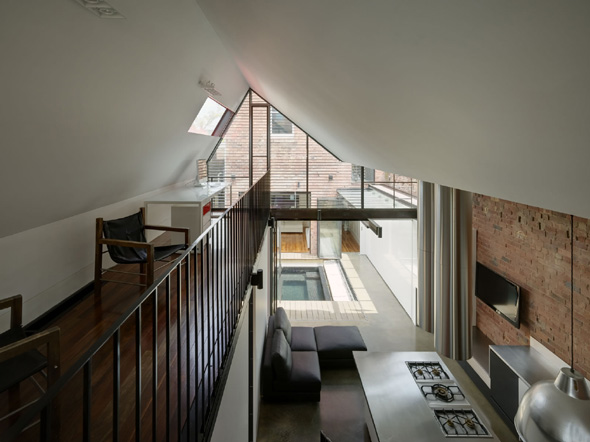
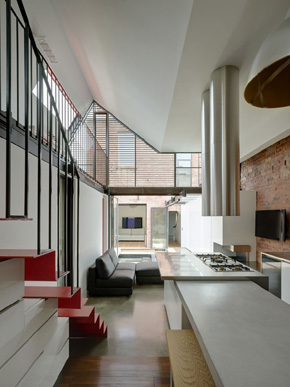
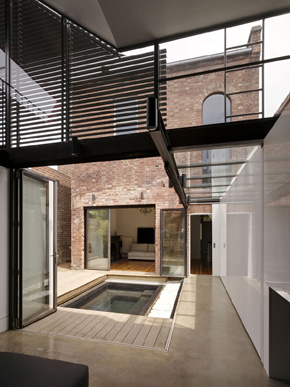
An outdoor courtyard is located at the heart of the house allowing the direct contact between outdoor and indoor space. Definition between these environments is barely distinguishable. The strategically located courtyard in relation to the transparent doors allows constant physical and visual interaction between these environs and also provides abundant natural light and ventilation into the house, importantly decreasing reliance on mechanical heating and cooling systems.
Andrew Maynard describes: “Playfully splashes of deep red enliven the interior. Windows occasionally puncture the interior allowing a cinematic light to dance over the internal of the Vader House”. The refined material and colorful palette of the extension oppose to the dark wall of the terrace house. A transparent glass corridor along the Northern boundary wall was designed in order to unite these two opposing elements.
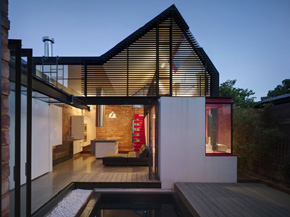
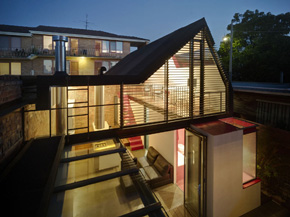
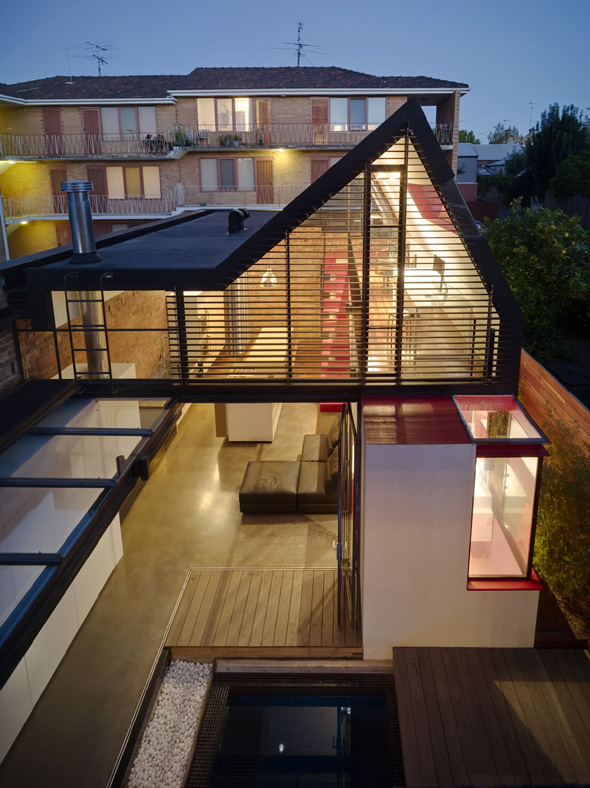
The design of Vader House seems to be simple. But later, one can realize its complexity as many elements of the house serve simultaneously multiple functions. For example, the main stairway is part of the kitchen, the louvres function serve also as light control and privacy screening and the external wall is at the same time the internal kitchen wall but of double height.
The architects have used the logic of tetris on their design. The extension is created out of components that appear to have fallen at the eastern end of the terrace house. Such random tetris piece has created an en-suite at the master bedroom.
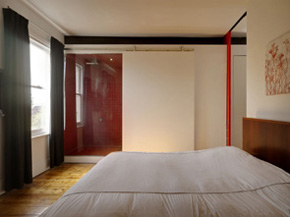
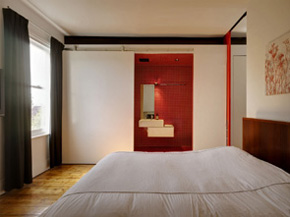
Vader House is an empiric space. While moving inside the house, secret elements reveal. The timber deck in the courtyard when pulled aside reveals a hidden spa. Similarly the timber floor boards in the extension form a trapdoor that when opened exposes a cellar, extending far beneath the Vader House. The courtyard-facing bathroom windows turn opaque with the flick of a switch. A secret stairway leads to the mezzanine study. Glossy white panels along the courtyard corridor conceal services. A secret way at the same space leads to an upper level providing panoramic views of the city. When these surfaces open by revealing the hidden elements, the scene changes completely and Vader House acquires a dynamic and chameleon - like character.
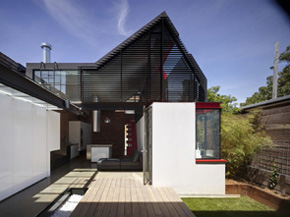
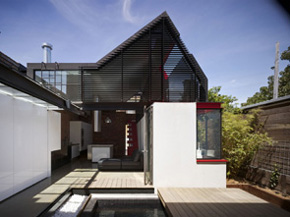
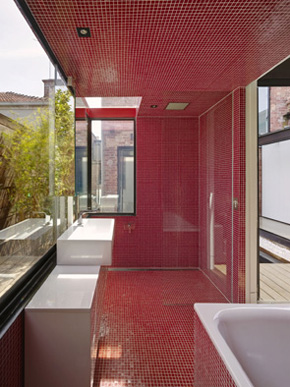
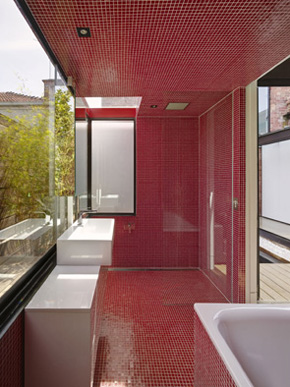
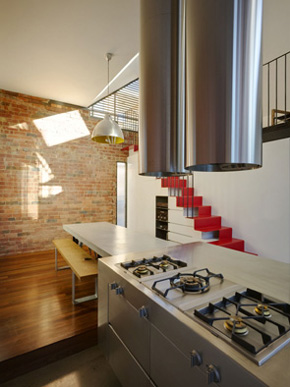
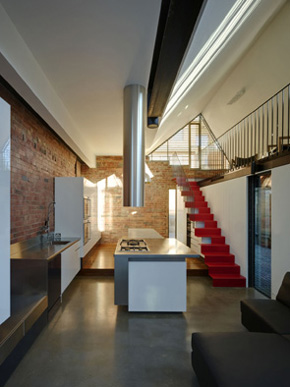
Vader house wins the 2009 Vision Award. Vader house is also shortlisted in the AIA and idea awards.
Information: Andrew Maynard Architects
Photos:Peter Bennetts
Maria Papadimitriou, architect engineer
Vader House, Fitzroy, Melbourne, Australia
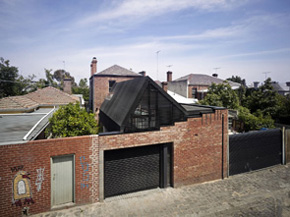
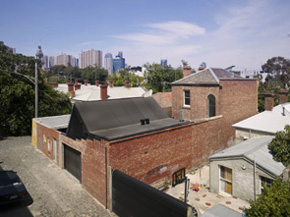
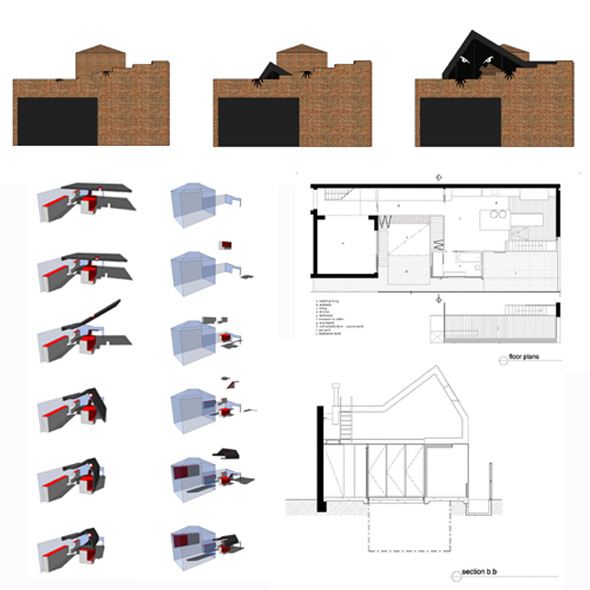
The Vader house comprised an alteration to an existing Victorian terrace house in the centre of Melbourne. The owner of the house was a couple that wanted a large flexible area suitable for entertaining. "Dense city terrace houses' plot can often be tight; however in this case, there was sufficient room for movement.", Andrew Maynard says.
Related articles:
- BTEK, almost an exercise in land art. ( 09 May, 2014 )
- Seletar Close ( 17 December, 2009 )
- Private residence and guest house in the Laurentian mountains ( 26 March, 2011 )
- Rogers Stirk Harbour & Partners was awarded for the second time with the Stirling Prize ( 08 November, 2009 )
- Moderna Museet Malmö ( 10 May, 2010 )
- Valletta City Gate ( 15 July, 2010 )
- Long Barn Studio, Nicolas Tye Architects ( 17 December, 2011 )
- Ceramica Cumella . Shaping Ideas ( 01 October, 2012 )










